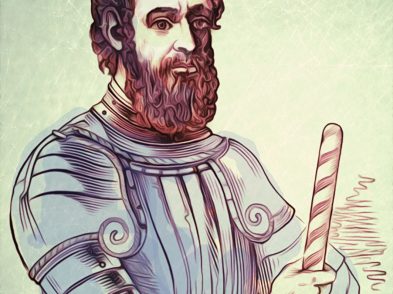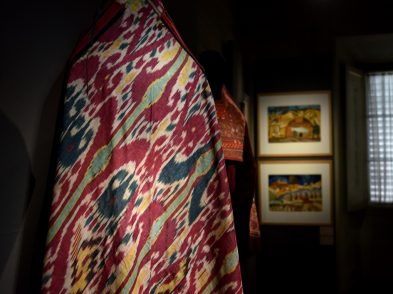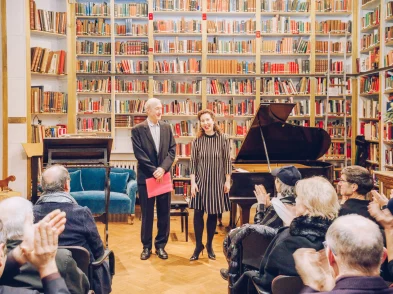A chapel is a place for prayer, meditation, or private worship. A recess or small room within a church or cathedral; space in the private quarters of a state building (such as the chapel of Eleonora of Toledo’s chapel in the Palazzo Vecchio); a room in a private residence: all these are considered chapels. Gracing each side of the Arno, the Cappella dei Magi, within the Palazzo Medici-Riccadri, and the Cappella Brancacci, part of the Basilica di Santa Maria del Carmine, are two particularly stunning examples of Florence’s many chapels. Both are known for their frescoes.
Cappella dei Magi
The massive Palazzo Medici-Riccardi, begun in 1444 by Michelozzo for Cosimo the Elder (il Vecchio), was the turning point in Renaissance architecture. Brunelleschi’s design was rejected for being too flashy, but Michelozzi’s vision of heavy blocks of stones was accepted and became the model for Renaissance palaces. For over 100 years, from 1444 to 1540, the palazzo was the family home of the Medici, with the first floor used as the administrative headquarters of their bank.
The first staircase, to the right in the courtyard, leads to the chapel. In this small, private space can be found Benozzo Gozzoli’s incredible fresco cycle, The Procession of the Magi (1459–1463), painted in brilliant, rich colors. The continuous panorama depicts the arrival of the three wise men. Several portraits are supposedly of the Medici, some contemporaries, and attendees to the council of Florence in 1439. The background is most imaginative, filled with castles, villas, exotic birds and wild animals, giving the work a magical quality. The painted and carved coffered ceiling, wooden choir stalls and patterned inlaid marble floor all complement this glorious work. A self portrait of Benozzo Gozzoli is identified by the words opus benotii (‘work by Benozzo’) on his red cap.
Don’t miss Gentile da Fabriano’s Intersession (1420–1423), a polyptych (five tablets), recently restored by the Opificio delle Pietre Dure. The painting languished for many years in the storage rooms of the Pitti and was thought to have been lost.
Palazzo Medici-Riccardi
Via Cavour, 1
Open Thursday through Tuesday
9 am to 7pm;
closed Wednesday
Entrance fee: 4 euro
Cappella Brancacci
The Basilica di Santa Maria del Carmine, originally built in the 13th century, is located in a district steeped in artisan history. Its Cappella Brancacci escaped damage in a horrific fire in 1771 that destroyed the church. When restored, the basilica was refashioned in the Baroque style. Miraculously, the 15th-century frescoes in the small chapel survived both the fire and the renovation.
The paintings are filled with deep emotion, depicting the life of St. Peter, who is always portrayed in an orange robe. Masolino began the cycle in 1424 for cloth merchant Piero Brancacci, with Masaccio, his pupil.
Masaccio’s Adam and Eve being Expelled from the Garden (top row, right side) is noted for its intensity. This and his masterful Tribute Money (left wall, top row) are considered to be two of the finest examples of Italian painting in existence. His powerful figures, their realistic expressions, the heavily draped clothing and the use of light and shade (chiaroscuro) all influenced the direction of artists of the early Renaissance, including Leonardo da Vinci and Michelangelo, both who came to the cappella to study his works.
In 1428, at the age of 27, Masaccio died mysteriously while on a trip to Rome. Filippino Lippi completed the chapel some 50 years later, from 1480 to 1485. Look for three portraits in St. Peter Enthroned (left wall, bottom row). The two faces by the altar are portraits of Masaccio and Masolino (he is the curly headed one gazing out at the viewer). Brunelleschi (supposedly the only portrait of him still in existence) is the figure in the doorway on the right, wearing a black hood. You will see a lovely view of 15th-century Florence in Masolino’s St. Peter Healing the Cripple (right wall, top row).
Each hour the museum shows a beautiful film, ‘The Eye of Masaccio’. Viewing the film is included in the entrance fee, and it should not be missed before seeing the chapel.
Basilica di Santa Maria del Carmine – Cappella Brancacci
Piazza del Carmine 14
Entrance through the cloisters (to the right side of the church)
Timed tickets, by reservation only; a maximum of 30 people are allowed at a time
Monday, Wednesday–Saturday, 10am to 5pm; Sunday and holidays: 1pm to 5pm
Closed Tuesday
Entrance fee: 4 euro (student and family rates also available)
Information and reservation (mandatory) daily 9.00am to 6pm: 055/2768224 055/276.8558
Cappella telephone: 055/2382195








